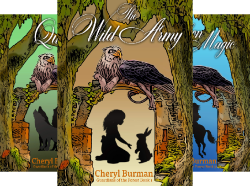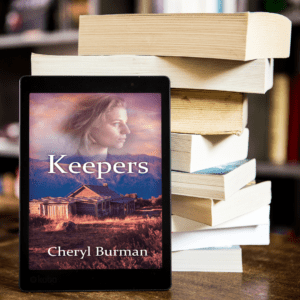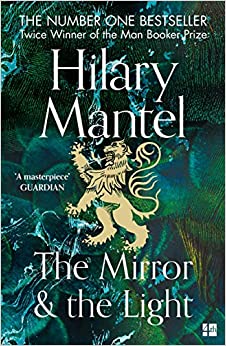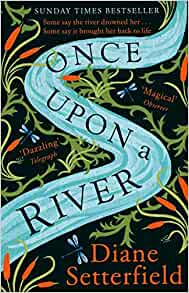Story endings have come up a lot recently. Or maybe, as I approached the final chapters of draft one of my current book, I suffered ‘red Mini’ syndrome. The topic of ‘endings’ appeared to be everywhere.
Short stories
The first mention referred specifically to short story endings. This was a video by Stroud Short Stories coordinator and writer, John Holland. His sage advice essentially said: your story likely ends at least one sentence, and possibly one (or more) paragraphs before you think it does.
This goes hand in hand with the adage: Resist the Urge to Explain. What often happens in a short story is that we get to the end of the action and then explain to the reader what happened afterwards. We want to tell them how the characters felt, where they went, and what they had for lunch (possibly not the lunch bit).
What we’re doing is tying the reader into just one – our own – interpretation of events.
But what if the reader has their own ideas of the ‘ever after’? Or what if it’s so obvious, the reader feels you are talking down to them by setting it all out like this? Result: reader dissatisfaction.
Grumpy readers are unlikely to go near your stories again!

Get the reader thinking
Readers love story endings which get them thinking. They want to mull over the events and wonder if this or that or something else happened. I’m often surprised at the interpretation people put on some of my stories, or even how they read the ending. In one story recently, of fewer than 300 words, I ended with two short internal dialogue sentences, no tags. In my mind both were thoughts by the same character. But one reader saw the second sentence as the thoughts of another character. Both interpretations work, differently. Brilliant.

The prompt was this image, and here is the ending:
His fingers splay against the glass.
See, here I am, reaching out to you, wanting you.
See, here I am, saying goodbye.
(the rest is here)
So for short story endings, the rule of thumb is, let the reader exercise their brain. They will love you for it. (Please note this is not the same as confusing them and leaving them thinking: what on earth was that all about?)
Are story endings different for novels?
There are many options for endings, of course. And leaving the reader to work it out for themselves may or may not be the best course.
The question is: what’s right for your story? Which is more or less the same as: what’s right for your reader?
This year, I’ve enjoyed taking part in a monthly virtual writers’ café hosted by the wonderful people at Novel Nights. We come from all over the UK to discuss writerly topics for an hour. Bliss. Last month, it was – you guessed it – endings.
A multitude of endings
The discussion leader noted various types of endings available to the novel writer. These included: deaths, rebirths, revelations, twists, tying up of mysteries, solving of crimes, happy ever after (or happy for now, which is an interesting option for romance writers), circular story endings (ie they bring us back to the start), open (as discussed above) and closed story endings, and so on.
In our breakout groups, we discussed the reader’s perspective. This, I believe, is simplest when it comes to genre endings.
Genre
Readers have expectations of genre about the resolution of the core conflict the author has set up.
If you’re writing a whodunnit, the reader expects a story ending which tells them who actually did it. If it’s a ‘save the world’ fantasy, they want the world to be saved.
In my series Guardians of the Forest, the theme is saving the Forest from destruction. I was very much obliged therefore to deliver a story ending which (spoiler alert) saved the Forest. But how I got there, the twists and turns, the ups and downs, the ‘how is this going to actually be achieved?’ is what has readers talking about not being able to put the books down.

If there’s a mystery of some sort hanging about, they want to know what it is before they close the covers.
In a romance of the enemies to lovers trope, readers want a story ending where the warring protagonists finally realise they are meant for each other.

In Keepers, with one aspect being a ‘torn between two lovers’ theme, I suspect many (not all) readers would throw the book down in disgust if the protagonist walked away from both. As it is, opinion is divided about Raine’s choice, but that’s good – it means readers care.
What keeps people reading is the way the writer gets to the (often but not always) foregone conclusion. Which leads us to surprise endings – the last minute revelation which changes everything. Even here, however, the story ending shouldn’t be a complete surprise to the reader, but rather one where they think: Yes of course, the clues were there all the time. Very clever!
And for the rest?
What about non genre-specific books, or literary fiction as we like to call it? Generally, these are considered stories where the characters’ motives and behaviours dominate the tale, and the plot, such at is, takes a back seat.
Here it’s harder to define expectations. But the bottom line remains that readers must be satisfied the time spent with the characters has been time well spent. They want a ‘satisfying’ ending. What does this mean?
This is where the third discussion on endings came in useful, in a self-editing webinar led by UK author Roz Morris. In addition to endings needing to suit the genre, as above, Roz added two further categories for us to consider. Rather than explain, I’ve found a handful of recent books I’ve read which serve as successful illustrations of each type of story ending.
New beginnings: a strong sense of permanent change
The old has passed, often in dramatic manner, and a new beginning opens up for the characters.
In The Mermaid of Black Conch, everything changes after hurricane Rosamund sweeps across the island. During the time immediately before Rosamund, various conflicts have come to a head, and there are hints of old wounds being healed. In the core story, that of fisherman David and the mermaid Aycayia, there is the sadness of understanding how their futures must unfold separately. The hurricane destroys the past physically and metaphorically. As the last line tells us:
‘They waited for the storm to pass and when it did, eventually, they climbed up and out into the time after Rosamund.’
In Maggie O’Farrell’s brilliant piece of women’s literary fiction, The Hand that First Held Mine, the mysteries have been solved. But the revelations have left one of the protagonists deeply traumatised. He has taken to his bed, not speaking or moving. His girlfriend, Elina, sees a way to help him purge his remembered past by looking further back to unearth buried, happier, memories, and thence find a new future. As she is doing so:
‘… she feels a pressure on her hand and he speaks his first words for a week. ‘Keep going, El,’ he says, ‘keep going.’
And she does.’
One of the best story endings I’ve ever read, from Mantel’s The Mirror and the Light, seems to me to fit this new beginnings category, despite it describing a death.

We know what happens, we’ve known for 400 years before the book was written how it all ends. But Mantel’s gorgeous writing and rich imagery as Cromwell goes to his death had me as much on the edge of my seat as if I was hoping and praying for a reprieve, for a word from the king to save him. I found myself crying as this man, whom Mantel paints as honest, intelligent, moral and clever, is literally brought to his knees, his thoughts tumbling, memories and feelings, smells and sights turning together with the realisation of his death and invoking the courage to meet it. Finally, there’s that last, poignant sentence, which speaks of hope, a new beginning, that this is not the end.
‘He feels for an opening, blinded, looking for a door: tracking the light along the wall.’
A sense of resolution
Hamnet is such a richly written book, with its thin veil between the living and the dead, yet the language of the story ending is straightforward. Agnes learns her husband has written a play entitled Hamlet (interchangeable then with Hamnet) and is aghast that he has turned their child’s death into a commercial enterprise. She goes to London to confront him. Instead, she is confronted by the play itself. As she watches, she understands his motives have been pure, he has used the play to resurrect their son and to enshrine his memory forever. As in the last line:
‘Remember me.’
In the Novel Nights discussion, our attention was drawn to Once Upon A River by Diane Setterfield, a book I particularly love. The tale is part mystical, part ‘reality’, a fairytale really, and is told by a narrator.

It opens, classically, with ‘There was once an inn…’, and finishes with:
‘And now, dear reader, the story is over.’
This is followed by a directive from the narrator for the reader to get on with their own lives. The reader has been let go, the story with all its different threads, has been resolved. No more for us to see here, for now at least.
Story endings conclusion
Endings are tricky things. The author needs to leave their reader happy (or very sad, or hopeful or whatever emotion is appropriate). They don’t want to leave the reader wanting to hurl the book across the room, screaming: What??
There’s little worse for a reader than to feel ‘cheated’ by an unsatisfying ending. For me it raises a red flag about reading more from that author.
So think carefully about what type of ending you want to write.
Happy writing.
Find more writing tips by clicking here.
Good article! I always try to end stories, novels & narrative poetry on a strong image!
Thank you Nina – yes, a strong image will leave the reader thinking!